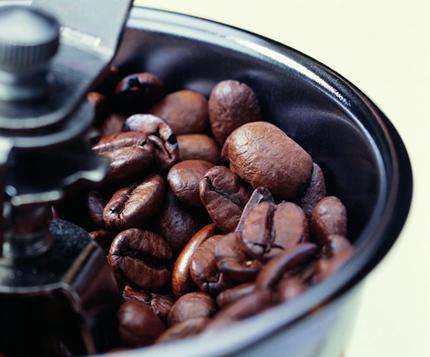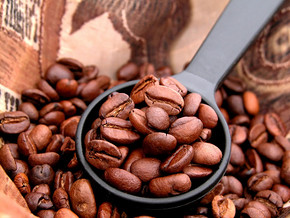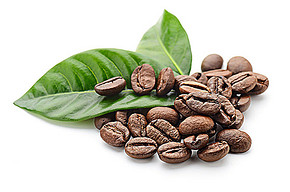The taste and flavor characteristics of Rosa coffee
Follow the caf é (Wechat official account vdailycom) and found that Beautiful Cafe opened a small shop of its own.
Rosa is a member of the Tibika family, but it became famous more than 70 years after leaving Ethiopia, and fulfilled the saying that Ethiopia is a treasure trove of Arabica genes. Giving a variety to go abroad is enough to stir up trouble in the coffee market.
The dry aroma of Rosa is very bright, with aromas of rose and jasmine, with aromas of pomelo and citrus, light baked with nutty aromas, and wet aromas with hazelnut and more floral characters. In terms of taste and flavor, compared with the previously rising aroma, it may be slightly mild and subtle in the early stage, and the flower and fruit flavor will gradually increase as the temperature drops, and the cold aroma is excellent (sweet preserved fruit, rose fruit, orange glaze jam, strawberry jam, silk pine, cherry, vanilla and rose gradually fade, leading to lemon-flavored fruit). This is a coffee that can be praised by a large number of adjectives, the sweetness of the silk, which is testing the brightness of this coffee, especially in the case of shallow roasting.
According to the Panamanian Emerald Manor website, "Rose Summer" coffee seeds were taken from Geisha Mountain (Mount Rosa) in southwestern Ethiopia in 1931, transplanted to Kenya in 1931, replanted in Tanzania in 1936 and introduced to Costa Rica in 1953. It is unknown when they will be introduced to Jaramillo Manor in Panama. After the Price Peterson family, who only knew the Emerald Farm (Hacienda La Esmeralda) of Panama, bought the Galamie Manor in 1996, they found that the coffee flavor on the edge of the estate was unique, so they took part in the 2004 Panama "COE" competition, never wanted to become famous, and won awards almost every year since. Later, it was identified that the variety originated from Ethiopia's "Rose Summer Mountain", so it was called "Rose Summer" coffee. Panamanian Gesha coffee sold for a sky-high price of nearly $290 per kilogram.

Rose summer coffee
Place of origin: Ethiopian color: turquoise features: flower aroma, tropical fruit, strong sweetness
Rosesia is a very rare coffee variety, which has caused a sensation among coffee connoisseurs around the world over the past five years. It is considered to be the brightest, richest and most fragrant coffee variety.
Rose is full of sweetness and cleanliness on the palate, with rich aromas ranging from berry and citrus to mango, papaya and peach. A very obvious lemon (bergamot) general aftertaste is also a typical cup test attribute. So far, Rose Summer has been the champion of coffee varieties. [cup test evaluation] moderate alcohol thickness, sweet, multi-layered tropical fruit flavor, rose type aroma, aftertaste.
In 1931, the species of Geisha was found in the Rosa Forest, located in Ethiopia and sent to Kenya's top coffee research institute; in 1936, Rosa coffee was introduced to Uganda and Tanzania; and in 1953, Costa Rica began to introduce the coffee. Finally, in the 1970s, Mr. Francesca Zelazin of the Dongba Seventh Farm in Panama received seeds from CATIE in Costa Rica and began growing Rosa Summer Coffee, which was hard to come by because of its extremely low production and bidding.
In 1931, it was obscure from Mount Rosa in southwestern Ethiopia to Kenya, Tanzania and Costa Rica, and it was only transplanted to Panama in the 1960s, and it took nearly half a century before it suddenly became a blockbuster. Beat the victorious varieties in coffee, such as Bourbon, Kaddura, Kaduai and Tibica, and won the first prize of the 2005, 2006 and 2007 Panama Bean Cup Test Competition. In 2007, the International famous Bean Cup Test sponsored by the American Fine Coffee Association (SCAA) won the championship again, and the bidding price was sold at US $130 per pound, setting a record for the highest price in the history of competition beans.
It is reported that the later Panamanian national treasure bean competition will be divided into two groups: Rose Summer and non-Rose Summer, so as not to be robbed of the brilliance of other varieties by Rose Summer. Rosa is a member of the Tibika family, but it became famous more than 70 years after leaving Ethiopia, and fulfilled the saying that Ethiopia is a treasure trove of Arabica genes. Giving a variety to go abroad is enough to stir up trouble in the coffee market.
For a long time before, top coffee was mostly identified as following Japan, while Rose Summer swept through the coffee world with hurricane power, and the coffee revolution was fierce. Once occupied the throne of the coffee kingdom for a long time, the Blue Mountains of Jamaica and Kona of Hawaii also had to back off.
Important Notice :
前街咖啡 FrontStreet Coffee has moved to new addredd:
FrontStreet Coffee Address: 315,Donghua East Road,GuangZhou
Tel:020 38364473
- Prev

Introduction of Bolivian boutique coffee beans
Following Cafe Review (Wechat official account vdailycom) found that Bolivia Coffee, a small shop opened by Beautiful Cafe, has a rich and unique aroma, both the aroma of ground beans and the aroma of the coffee produced are obviously strong, similar to the mixture of flower and fruit aromas, impressive. Coffee beans are roasted shallowly. Medium baked. Deep baking. Bolivian coffee suitable for French re-baking
- Next

How much is the coffee? -The summer coffee.
Pay close attention to the coffee comment (Weixin Official Accounts vdailycom ) and find that the beautiful coffee shop opens its own shop. How much does a cup of rose summer coffee cost, equivalent to more than RMB 120 yuan? Panama rose summer grows at an altitude of 1500 meters to 1650 meters. Because of its unique growing environment, it has a unique flavor: rose summer coffee green beans have a jade-like warm texture and have a very beautiful blue-green color.
Related
- Detailed explanation of Jadeite planting Land in Panamanian Jadeite Manor introduction to the grading system of Jadeite competitive bidding, Red bid, Green bid and Rose Summer
- Story of Coffee planting in Brenka region of Costa Rica Stonehenge Manor anaerobic heavy honey treatment of flavor mouth
- What's on the barrel of Blue Mountain Coffee beans?
- Can American coffee also pull flowers? How to use hot American style to pull out a good-looking pattern?
- Can you make a cold extract with coffee beans? What is the right proportion for cold-extracted coffee formula?
- Indonesian PWN Gold Mandrine Coffee Origin Features Flavor How to Chong? Mandolin coffee is American.
- A brief introduction to the flavor characteristics of Brazilian yellow bourbon coffee beans
- What is the effect of different water quality on the flavor of cold-extracted coffee? What kind of water is best for brewing coffee?
- Why do you think of Rose Summer whenever you mention Panamanian coffee?
- Introduction to the characteristics of authentic blue mountain coffee bean producing areas? What is the CIB Coffee Authority in Jamaica?

